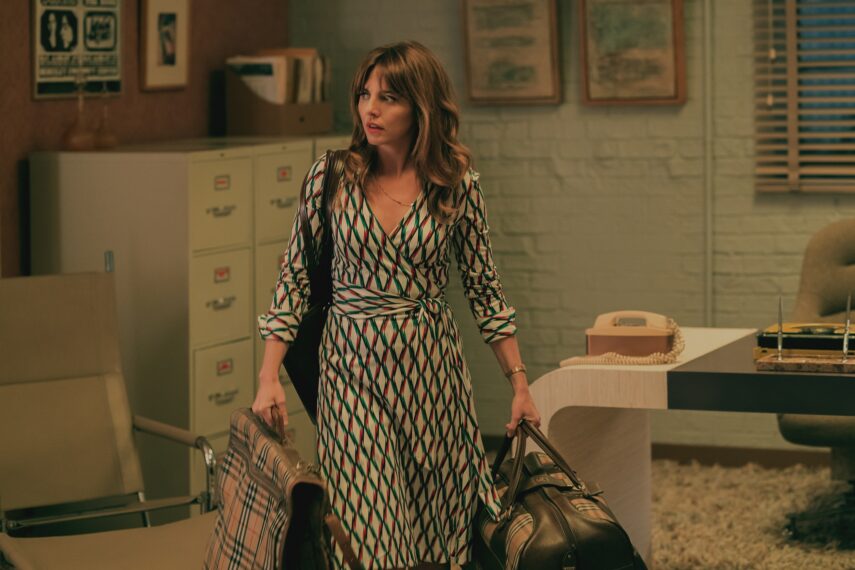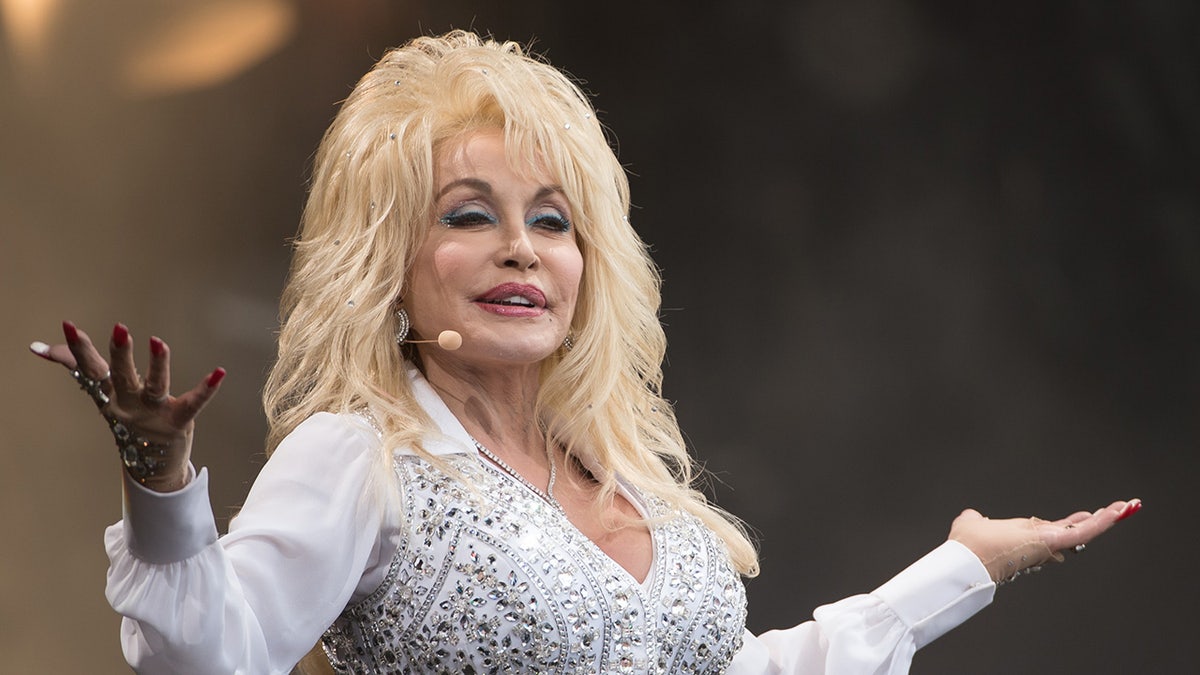“What might this be?” had been a question that, in the course of my thirty-five-year career as a clinical psychologist, I’d posed to clients hundreds of times. It was, in fact, the customary prompt used when administering the “Rorschach,” which is a type of personality measure that calls for asking a patient to look at ambiguous images on a set of ten “cards,” each one resembling an inkblot, and then spontaneously offer up what it looks like to them. Considered by many in the field to be useful in gaining access to the unconscious, it is typically used by clinicians as a helpful tool for working toward a diagnosis, using that set of ten cards, each one presenting an image different than the last. As such, diagnosing helps the psychologist zero in on the patient’s emotional state as it relates to past history.
Since closing my therapy practice in 2019 to build a writing career, I’d given little thought to the “Rorschach.” Until two weeks ago. I was popcorning my way through an afternoon screening of Barbie—this summer’s blockbuster hit—and began to contemplate how I would characterize the film, if asked. The question intrigued me: was it possible that a show ostensibly about the travails of a famous plastic doll created for young girls––first in Barbie Land, and then in the Real World—could be hailed as a movie about something far deeper? Something more than a live-action cartoon?
I nodded, reading her remark for a deeper level, just as any good psychologist would.
“So, what did you think?” I’d asked Ava, my perceptive thirteen-year-old niece, and movie buddy, as we’d moseyed our way home from the local AMC. Not wanting to influence her reaction, I avoided sharing that I’d pegged the story and visuals as a terrific mashup of creative and shrewd, or mentioning any scuttlebutt about the movie being either controversial or without substance. “It was great!” she replied. “Funny—with a good message about just being yourself.” I nodded, reading her remark for a deeper level, just as any good psychologist would. Barbie had resonated with Ava as a flick about identity and belonging. I wasn’t surprised: she was, after all, a young girl part of today’s cultural and physical wave of adolescence, and certainly, the film’s pitch for self-acceptance had been one of its overarching refrains.
A day or two later, however—after neighbors and friends who’d also seen the movie weighed in when I asked in a conversational tone—I had the chance to peruse several of the many “think pieces” that had surfaced online in the wake of the film: they quite often put forth the idea, in layman’s terms, that Barbie was its own kind of inkblot. An inner voice, one that had often brought me insight, now prodded me to consider this question like each of the ten cards drawn from the full Rorschach set: Hadn’t Barbie offered up a kaleidoscope of visual images—all of which illuminated many kinds of ideas—the kind only a film could offer?
Intrigued, I began to mull, in earnest, the questions Barbie posed. The varied responses I’d heard suggested that there were myriad ways of understanding the movie’s “real” message: Was Barbie, espoused by the several women with whom I’d schmoozed, simply a full-bore treatise on feminism in disguise? One that offered a cheeky takedown on the principles and practices of male dominance? As interesting, perhaps, was my observation that while these gals seemed in agreement about what the film had really meant, they were evenly split about whether its message was one to be celebrated or eschewed—and why.
An activist pal who was considering a run for our local library board in order to be heard as a voice against censorship, pronounced one afternoon that Barbie’s message was a more subversive one. Instead of mere entertainment, was it instead a poke-in-the-eye polemic aimed at the Supreme Court’s recent ruling on a woman’s right to abortion? I hadn’t given a lot of thought to seeing the movie from that angle, I confessed at that point. She’d looked at me with astonishment—and then with irritation. “How did you not get that?” she’d nearly shouted. “When Barbie protested Ken’s plan to overturn the Constitution in Barbie Land? And lectures him on how intensely the Barbies worked to make the Constitution everything it was? That it couldn’t just be undone in a day?” And then the way Ken answers, ‘Both literally and figuratively—just watch me?’”
I began listening closely for which images and scenes had been critical in creating their reactions.
Or, was Barbie essentially “a masterstroke by Mattel” as my cousin who was a civil engineer—and who was twenty years younger than I—suggested in a text? “They managed to be irreverent and funny while (sort of) acknowledging Barbie’s shortcomings—and in the end will probably sell millions more Barbies.”
The psychologist who still lived in my head grew even more curious: with so many disparate takeaways voiced, and likely, a host of other, different interpretations yet to be heard, I began listening closely for which images and scenes had been critical in creating their reactions.
“Well, I mostly considered it as about mortality and the concept of discovering purpose in one’s life,” said Lanie, a woman I’d met only recently, over iced lattes at Starbucks one late afternoon. We were interrupted then by a woman who was a stranger at the next table; she offered a comment which was unsolicited and which, for a moment, took me in another direction: “That’s wild,” she opined. “For me, it was a total send-up of every cultural stereotype out there. And boy, was it a hoot!”
Smiling, I turned my attention back to my new friend Lanie then, and asked “What do you mean?” Shaking her head, she laughed. “Are you kidding me? All those repeated references to death and anxiety and Barbie’s ‘existential crisis?’” A moment later, however, slumped down in her seat, Lanie appeared sad. “And the old lady on the bench who Barbie declares beautiful? And the woman happily agrees?”
I nodded, remembering this scene in which Barbie arrives in the Real World—and encounters, for the first time ever, a person who is old—and how touching the two characters’ exchange had been. “But did you notice how, as Barbie walks away, the woman looks down at her newspaper?” she added with a sigh. “I wanted to cry because she seemed so lonely. Like someone who realized her life was nearing its end.”
Like the stranger in Starbucks, I, too, had originally declared Barbie simply as a high-spirited romp.
I was aware that it was neither my place nor was there enough data to make any sort of clinical observation based on such a brief “share.” Nevertheless, my long-time experience in my practice, and even my training—all this had taught me to pay attention to language, both spoken and expressed through physical cues. “So, was the movie a downer for you?” I asked as I sipped the last of my coffee through the straw. Lanie’s answer came fast. “Oh no!” she insisted, before then slowly adding, “Well, maybe.” I thought then about what I knew to be Lanie’s ongoing worry about her health, as well as her sorrow about not being able to rely on immediate family, with whom she was not on particularly good terms. Imagining that her own life circumstances had made her sad for the character and thus, unconsciously for herself, seemed hardly a clinical stretch.
It was only while driving home afterward, however, that the small voice so often present in my mind finally chimed in: So, what about you? it wanted to know. You seemed to get pretty teary-eyed during those scenes between the Real World mom and her sullen tween daughter. Like the stranger in Starbucks, I, too, had originally declared Barbie simply as a high-spirited romp, but now I saw that my conversation with Lanie had stirred something more in me. I had, in fact, actually been moved by what I recognized as the movie’s “Challenges of Motherhood” theme.
This is what spoke to me then. An image rose in my mind of a scene in the movie when the “Real World” mom reaches past the driver’s seat to hug, Sasha, her tween daughter as she drops her off at school and is quickly rebuffed. How easy it had been to identify with the sadness exhibited by Sasha’s mom as she stumbled in her efforts to connect with her girl. And easier still, to recall the many false steps I’d made with my daughter, Grace, and the real-world tango we had danced—one which required me to understand my own ability to know when to lean in and when to let go.
She’d sensed my need to be recognized as a different kind of mother than the one that I had had as an adolescent.
By sophomore year in high school, Grace had demonstrated all the attributes I’d always hoped to see. She was an independent thinker, a good friend to her peers, motivated in her studies, and committed to her violin. And not only did she have a good ear for music, she also had an equal proficiency for understanding the underbelly of what people were really saying. Yet, on the home front, a new Grace had simultaneously made herself known. Suddenly, I had an adolescent antagonist under my roof. A daughter who challenged my understanding of all she was going through at every turn.
At the time, I remembered thinking that her rebellion seemed misplaced, despite how much I prided myself on my abilities to listen to her, to interpret and respond in ways that would enrich our relationship. I’d hoped our interactions would be very different than the ones I’d experienced with my own mother, whose frequent rages, followed by long hours when she would disappear from our home, had terrified me when I was a girl. Wishfully, I’d thought that Grace and I could escape so much of this contentious behavior because I cared so deeply for her and believed I understood her so well.
“Grace is off-the-charts smart,” Roxanne—my business partner, friend, and one of the best child and adolescent therapists with whom I’d ever worked—had said, and laughed. “Besides which, she’s a teenager, Terry! You should want her to push back in ways that are safe.” I’d known even then that Roxie was correct––but such knowledge hadn’t made it any easier to deal with my daughter’s strong emotions. Even with my friend’s counsel, I’d wrestled with my frustration.
With a gaze like a tractor beam, Grace had challenged me, focusing on my “listening” skills: surely on some level, she’d sensed my need to be recognized as a different kind of mother than the one that I had had as an adolescent. Real Mom’s monologue about it being “literally impossible to be a woman,” came back to me then, and the phrase “never be rude, never show off, never be selfish, never fall down, never fail, never show fear, never get out of line” echoed loud in my mind.
I had resolved to be a mother who paid attention to her daughter’s needs and wants. And thus, Grace’s capacity to read me was artful—just as was Sasha’s capacity to read her mother—the apt judgments of canny teenagers.
Now I had compassion for the anxious mother I’d once been.
During that year when she’d turned fifteen, I didn’t see Grace’s ability to tune in to people—especially me—as a gift. I wanted a daughter who did not give me a tough time. Unconsciously, I’d been pulling for a girl who would demonstrate some of the personality traits—the better ones—that I had possessed at her age. A teenager who worked hard; who was generous and kind, at least part of the time.
So, when Grace got sassy or threatened to explode––neither of which she ever did in public––I chose to believe, despite all my experience in working with adolescents, that the problem was not with my ears, but with her mouth. I hated having to parent an insubordinate teenager. Especially one who could be so emotionally intense. I didn’t want an unhappy, edgy daughter who might oppose me at every turn—or even slide off the rails. A daughter whose temper might escalate into a rage, as had my mother’s. Or, I was dismayed to see, my own.
Not surprisingly, a rapprochement in Grace’s and my real-life dance took far longer to achieve than it did for Sasha and her mother. I reminded myself that the film was just a movie. Nevertheless, how surprising it was to recognize now the easy way I’d been sucked down into the characters’ fraught relationship—and in so doing, managed to project my own thoughts, feelings, and meanings onto theirs. This had shaped my perspective on the movie as a whole. I steered my Honda into the driveway, grateful that I could look back now on those years when the difficulties I had understanding Grace’s attitude had dominated so much of my life; yet now I had compassion for the anxious mother I’d once been––a mother who’d had no healthy model for knowing how to raise a girl; for knowing when to step in and when to step back.
This past Sunday, I had picked up the phone. The call was from my millennial daughter, who said without preamble: “Okay, Mom, I went to that movie this afternoon, and I told myself the whole way through, ‘For God’s sake, Grace, you just cannot cry through a movie about a stupid Barbie.’ The truth is, though, that I nearly lost it.” Beyond curious now, particularly because Grace and I had not discussed it previously, I couldn’t wait to hear what she had to say.
Hoping not to influence her reaction, I only asked, “What about it touched you?” “Oh my God, Mom,” she replied, “the whole mother-daughter thing!” Then, quietly, she explained. “That scene where Barbie asks her creator for permission to become human and Ruth tells her that she doesn’t need her permission? Well, that whole thing got to me, but especially when she tells Barbie, ‘We mothers stand still so our daughters can look back to see how far they’ve come.’”
Staying silent, I listened as Grace continued, her tone soft now: “For me, that showed such a real reverence for the sacrifices women still have to make; as providers for their daughters; from generation to generation, how strong women lift one another up. And then the cycle begins again.” Was this a reflection that called for an interpretation? Not for this old-school clinician and mother, who, as might be expected, was too busy wiping a grateful tear from her eye. How far we both had come. The Barbie filmmakers have dubbed it “a movie for everyone,” and on this point, I’m inclined to believe their assessment is correct. Like a symmetrically rendered ink splotch, there’s just enough shape for it to be whatever kind of story any one of us wants it—or, more importantly, needs it—to be. In the meantime, I’m anticipating my next opportunity to kibbitz about “stupid Barbie,” where I imagine that for starters, I’ll be asking: “So, tell me, which Barbie movie did you see?”


























































